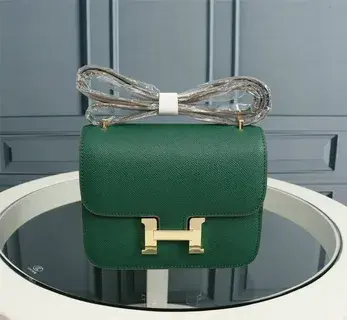Copy Bags: The Allure, Controversy, and Cultural Impact of Designer Replicas
- Maintenance indubai
- Apr 17
- 4 min read

In the realm of fashion, it is difficult sometimes to separate admiration from imitation. The same can be said of copy bags: handbags recreating high-end designer models-fakes that usually offer imitation of logos, stitching and even the leather quality. Imitations are frequently derided as fakes, but that has not held back creating controversies and making them more than a simple symbol of aspirational rebellion or economic inaccessibility. Apart from being a nuisance in the industry, copy-bags reveal very interesting cultural and societal undercurrents and so much more.
The Rise of the Replica Industry
While copy bags have existed for decades, it was globalization and the internet that made them a common trend. As luxury brands were gaining universal recognition, handbags became much more than accessories-considerable status symbols in their own right. Obviously, demand soon began to outrun affordability. A real Chanel or Hermès might cost a thousand bucks, but a decent-quality copy could easily be found on the internet or in a back alley at a fraction of the original's asking price. In other words, they offered many people that hard-to-resist proposition: a seemingly knightly look without the crushing price tag.
The technology has further propelled the industry. Enhanced techniques allowed counterfeiters to manufacture bags that looked indistinguishable from the originals. From the leather's feel to the logos' exact placement, some went up to such degrees of refinement that even the best fashionistas starting questioning their judgment. Social media also creates a sense of aspirational living, increasing the onus to "look the part," even if more often than not, it does not involve authenticity.
Moral Dilemma and Legal Boundaries
The ethics of copy bags or hermes replica bags remain a contentious issue. On one hand, luxury brands argue that counterfeiting not only infringes on intellectual property but also damages brand value and creativity. These companies invest millions into design, marketing, and craftsmanship. For them, replicas aren’t just imitation they’re theft.
On the other hand, supporters of replica culture argue that fashion shouldn't be a privilege reserved for the elite. They see high-end branding as a gatekeeping mechanism, and copy bags as a way to democratize style. Some even question the legitimacy of luxury pricing itself, suggesting that much of it stems from inflated brand perception rather than actual material or labor cost.
Legally, most countries classify copy bags as counterfeit goods, subjecting their sellers to fines or jail time. However, enforcement is inconsistent. In some regions, replicas are openly sold, especially in markets catering to tourists. Online, countless websites and social media accounts continue to push these products despite crackdowns.
The Psychology Behind Copy Bags
What drives someone to buy a copy bag? The answer lies in human psychology. People crave recognition, and designer items often signal taste, wealth, and belonging. Even those who claim not to care about status may find themselves influenced by subtle societal cues. Carrying a branded bag can feel empowering, like donning a badge of success.
Interestingly, not all replica buyers are trying to deceive others. Some are fully aware of what they’re purchasing and do so intentionally. They may view their bags as tributes rather than forgeries, or simply prefer the aesthetic without the price tag. Others treat replicas as “trial” items a way to test whether a style suits them before committing to the real thing.
Impact on the Fashion Industry
Copy bags force the fashion industry to confront difficult questions about value, exclusivity, and consumer desire. Some brands have responded by introducing more affordable lines or capsule collections, hoping to appeal to younger or budget-conscious shoppers. Others have doubled down on exclusivity, raising prices and limiting availability to preserve their aura of luxury.
At the same time, the popularity of copy bags has encouraged a movement toward “dupes”products that resemble designer items but stop short of outright replication. These dupes occupy a legal and ethical gray area, often viewed as more acceptable than blatant fakes. They’ve found a receptive audience among influencers and Gen Z shoppers who value style over brand loyalty.
A Mirror of Modern Culture
In many ways, copy bags reflect our modern relationship with fashion and identity. We live in an age where image is currency, where self-expression is curated through Instagram feeds and TikTok videos. Owning a designer-looking bag whether authentic or not becomes part of that expression.
But beneath the surface lies a more complex narrative. Copy bags highlight economic disparity, challenge traditional notions of authenticity, and expose the performative nature of luxury. They serve as a reminder that fashion is not just about clothes or accessories, but about the stories we tell through them stories of aspiration, rebellion, creativity, and sometimes contradiction.
Conclusion
From an initial glance, it might seem that the world of copy bags is quite simple and, therefore, an interesting phenomenon. Beyond the realms of fakes and forgeries lies an insight into class, culture, and the power of branding. Whether considered as an attack upon the status quo of fashion or represented as a mode of fashion democratization, copy bags raise a lot of discussion and controversy. It will always be in fashion as long as luxury is considered an object of desire and identity a visual language chic, scandalous, and always, already part of the conversation.


Comments